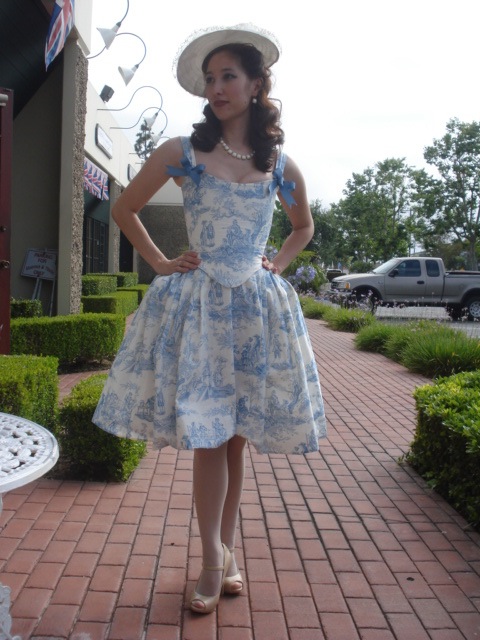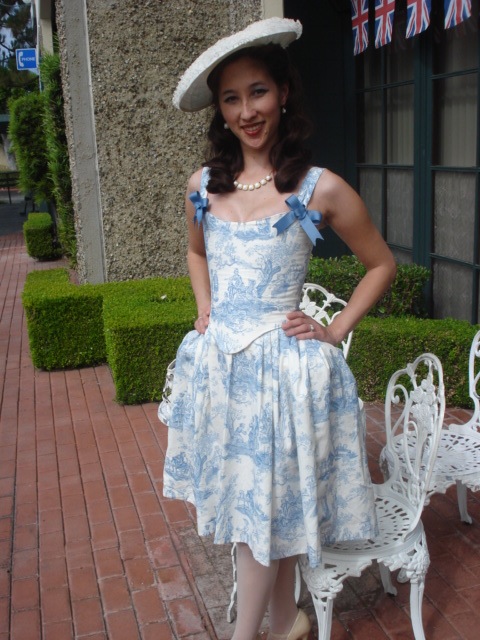Here are the ones I already have:
- Two 1850s parasols with baleen (yep) spokes/ribs, ivory finials, and folding handles. One of them has the most beautiful silk fringe too! Their covers were in pretty good condition when I bought them, but after a couple of events, they are starting to crack. I plan to recover these, along with my new baby.

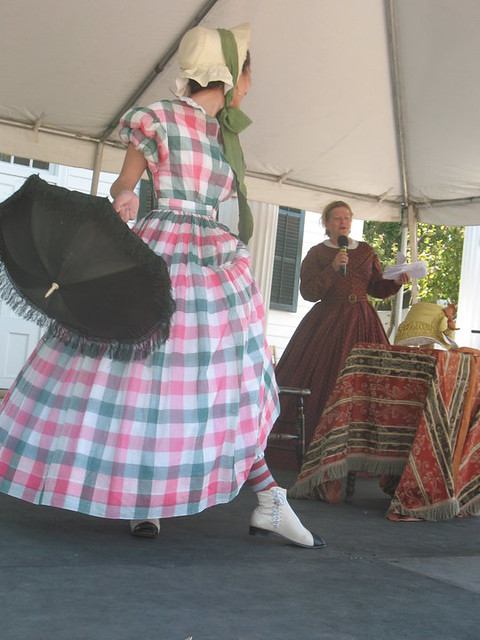

- A 1900-1920 parasol with wood handle and metal spokes/ribs and mechanism. The cover was a beige cotton which was in pretty good condition except that it was stained and really icky. I rushed the covering job since I needed the parasol for an event the next day, so I didn't have time to do a proper mock up, etc. This one also had a broken spoke/rib that Michael and I fixed by making a "splint" for it out of a metal tube. It has its original tassel, although it's a little worn.
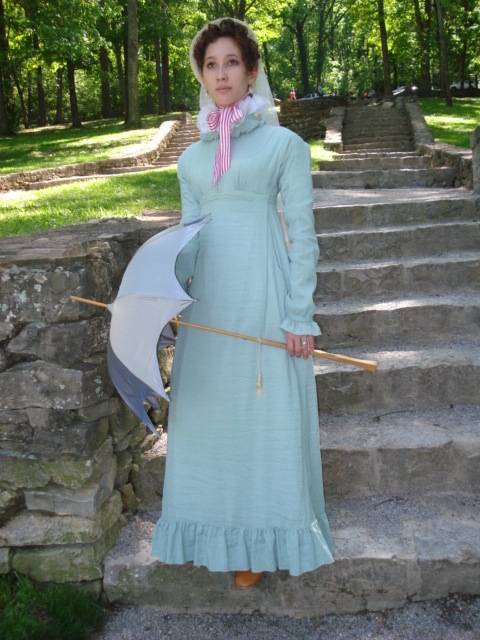
And now, my new baby! She is my favorite out of all of them, with her sage green watered silk and silk fringe, but especially her ivory handle. She also has baleen spokes and from the 1850s. There is polished cotton at the center of the mechanism and on each rib, where the hinge is. She has the remnants of the cord that was used to keep her closed when not in use. The cord would have had a little knob of ivory at the end that caught in the metal bit sewn onto the cover (see picture. I don't know how else to describe it! My other fringed parasol has this closure.) The thing I find most interesting about her is that the stitches are HUGE. But that would help with not putting too many holes in the nice silk and possibly causing some kind of damage. It is entirely sewn by hand. It looks like the selvedge was used for the edge of the cover (the selvedge is incredibly fine and almost invisible).
I took a lot of pictures so that I could reference them when recovering this, and you can see them all in the Flickr album.


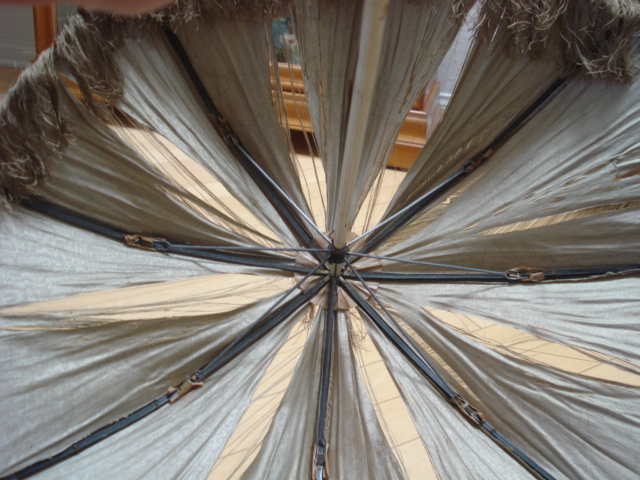
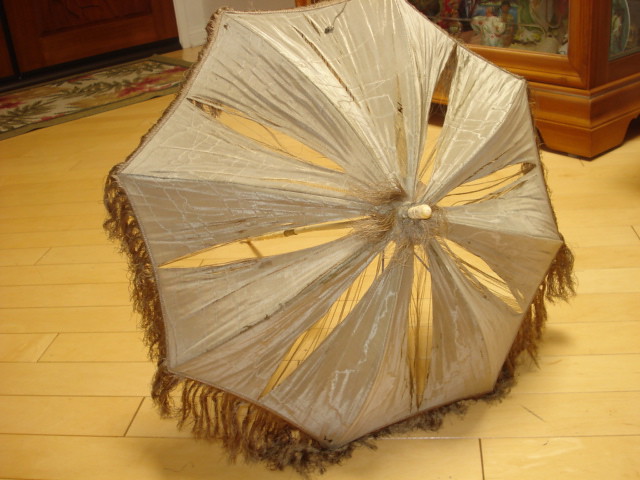

I look forward to recovering all my babies in the future. I will probably re-recover my 20th c parasol first, and then do my first two 1850s, before moving on to my newest one. However, if I get to overwhelmed the wonderful Marta Vincent recovers 19th century parasols professionally. :)
